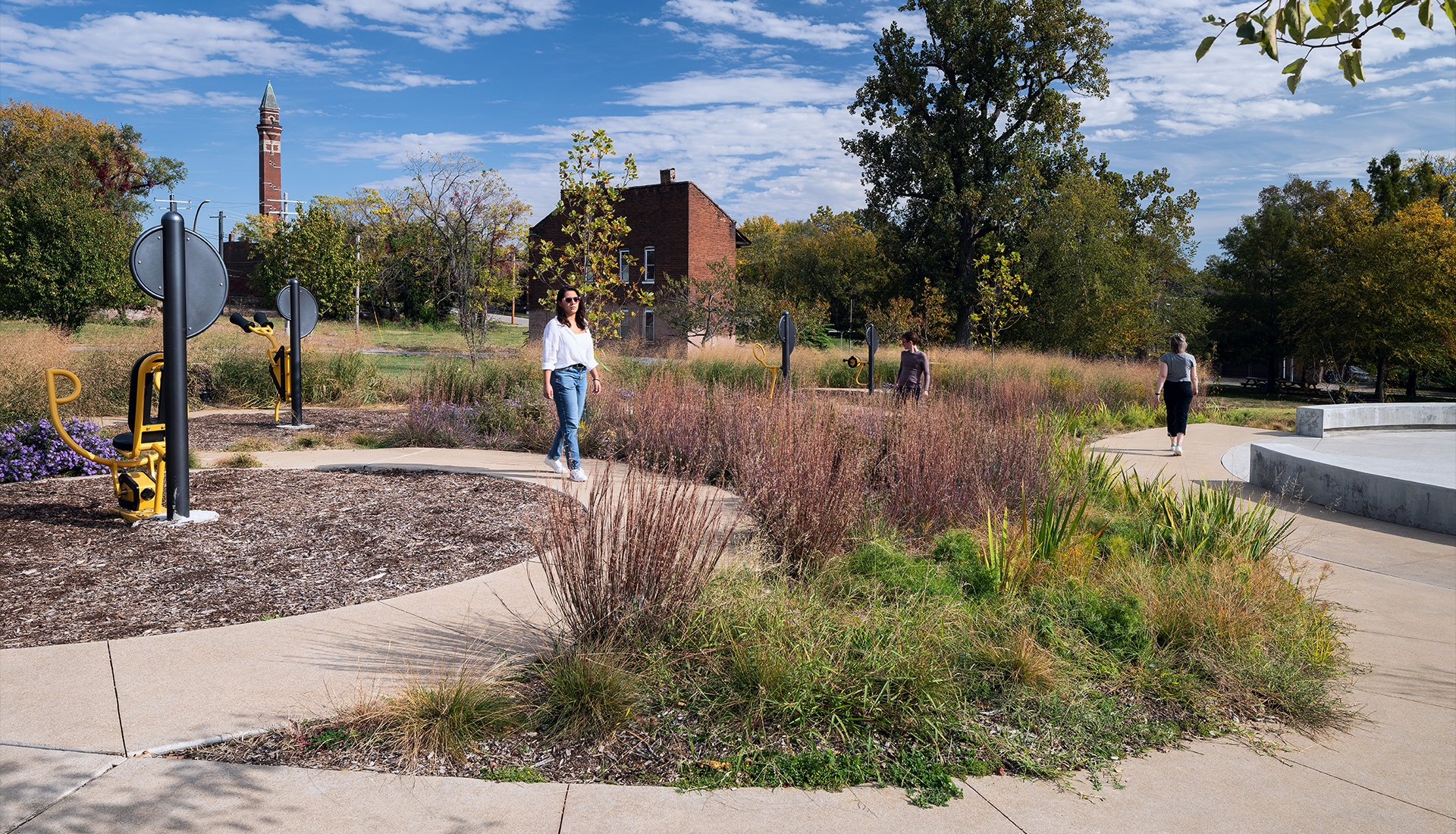Centennial Greenway Connector
Washington University in St. Louis

Schulze+Grassov
Copenhagen, Denmark

As a continuation of the 2016 WashU Mobility Framework Plan (MFP) that Arbolope Studio completed in conjunction with Schulze + Grassov, the Capital Projects Connector (CPC) was conceived of as fantastic opportunity to connect concurrent (but isolated) large-scale capital projects on the Washington University in St. Louis Danforth Campus with a pilot project to test proposed mobility infrastructure elements.
The CPC project connects the East End Central Landscape Project (east), the Olin Library Addition (central), the new Bryan Hall pedestrian and bicycle bridge over Forest Park Parkway (north), and infrastructural improvements along Huston Way and the Centennial Greenway (south).
While each of these projects contained pedestrian and bicycle infrastructure proposed by the MFP, the material palette had not yet been fully tested. The CPC functioned as a full-scale mock-up for new materials, iconography and overall system legibility. By connecting these projects, the CPC also served to create more continuous pedestrian and bicycle network on the WashU campus.
The CPC pilot project was able to improve several mobility infrastructure elements including: an improved concrete mix for the bicycle pathway, new strategies for thermoplastic marking design and installation, and a systemized approach for applying MFP guidelines to various site conditions.




Centennial Greenway Connector
Washington University in St. Louis
St. Louis, MO
28,900 SF
Mobility Planning
Campus Planning
Landscape Architecture
Streetscape Design
2015
Schulze+Grassov
Copenhagen, Denmark
As a continuation of the 2016 WashU Mobility Framework Plan (MFP) that Arbolope Studio completed in conjunction with Schulze + Grassov, the Capital Projects Connector (CPC) was conceived of as fantastic opportunity to connect concurrent (but isolated) large-scale capital projects on the Washington University in St. Louis Danforth Campus with a pilot project to test proposed mobility infrastructure elements.
The CPC project connects the East End Central Landscape Project (east), the Olin Library Addition (central), the new Bryan Hall pedestrian and bicycle bridge over Forest Park Parkway (north), and infrastructural improvements along Huston Way and the Centennial Greenway (south).
While each of these projects contained pedestrian and bicycle infrastructure proposed by the MFP, the material palette had not yet been fully tested. The CPC functioned as a full-scale mock-up for new materials, iconography and overall system legibility. By connecting these projects, the CPC also served to create more continuous pedestrian and bicycle network on the WashU campus.
The CPC pilot project was able to improve several mobility infrastructure elements including: an improved concrete mix for the bicycle pathway, new strategies for thermoplastic marking design and installation, and a systemized approach for applying MFP guidelines to various site conditions.






